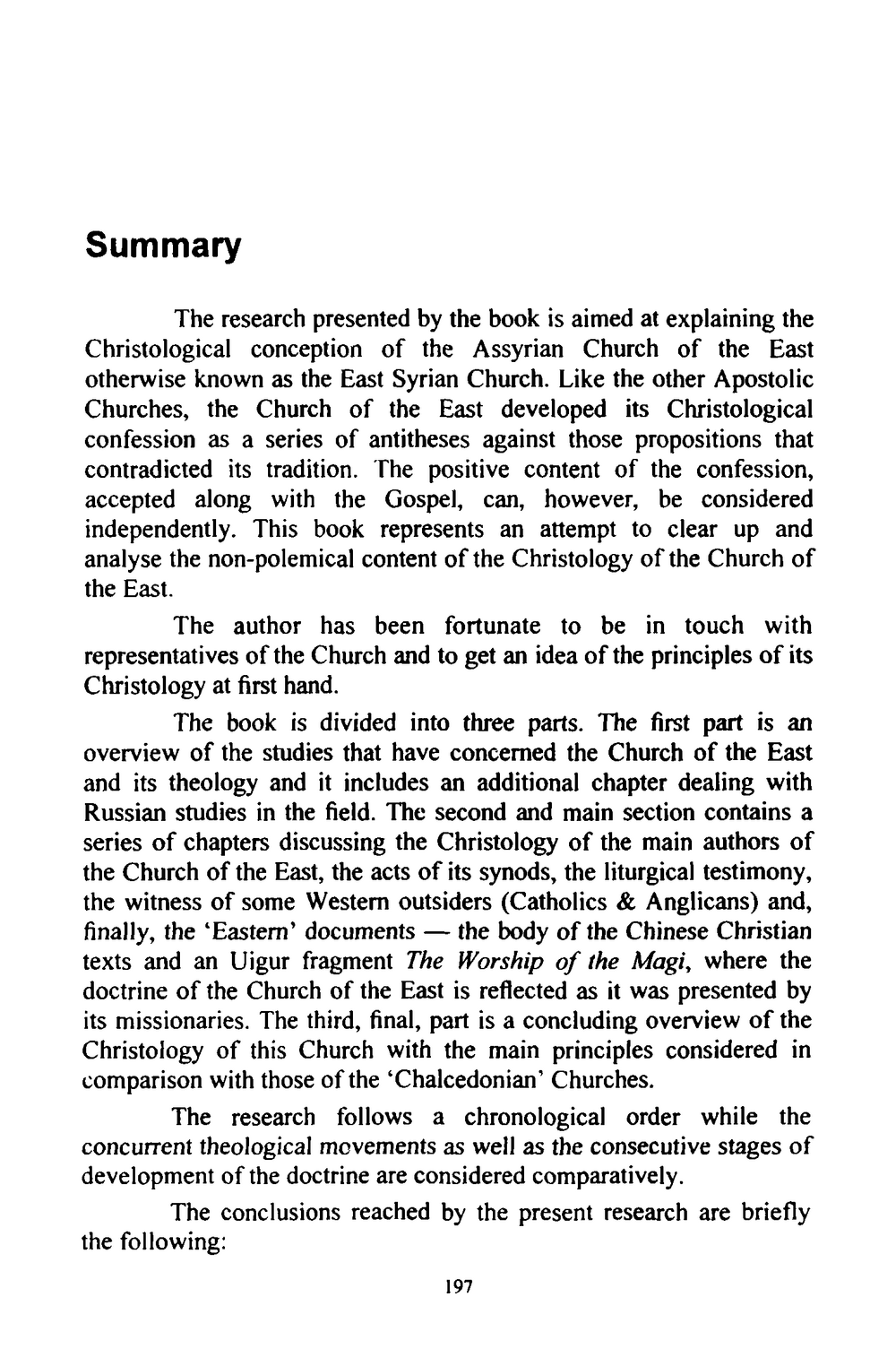Summary The research presented by the book is aimed at explaining the
Christological conception of the Assyrian Church of the East
otherwise known as the East Syrian Church. Like the other Apostolic
Churches, the Church of the East developed its Christological
confession as a series of antitheses against those propositions that
contradicted its tradition. The positive content of the confession,
accepted along with the Gospel, can, however, be considered
independently. This book represents an attempt to ciear up and
analyse the non-polemical content of the Christology of the Church of
the East. The author has been fortunate to be in touch with
representatives of the Church and to get an idea of the principies of its
Christology at first hand. The book is divided into three parts. The first part is an
overview of the studies that have concemed the Church of the East
and its theology and it includes an additional chapter dealing with
Russian studies in the field. The second and main section contains a
series of chapters discussing the Christology of the main authors of
the Church of the East, the acts of its synods, the liturgical testimony,
the witness of some Western outsiders (Catholics & Anglicans) and,
finally, the ‘Eastem’ documents — the body of the Chinese Christian
texts and an Uigur fragment The Worship of the Magi, where the
doctrine of the Church of the East is reflected as it was presented by
its missionaries. The third, final, part is a concluding overview of the
Christology of this Church with the main principies considered in
comparison with those of the ‘Chalcedonian’ Churches. The research follows a chronological order while the
concurrent theological movements as well as the consecutive stages of
development of the doctrine are considered comparatively. The conclusions reached by the present research are briefly
the following: 197
